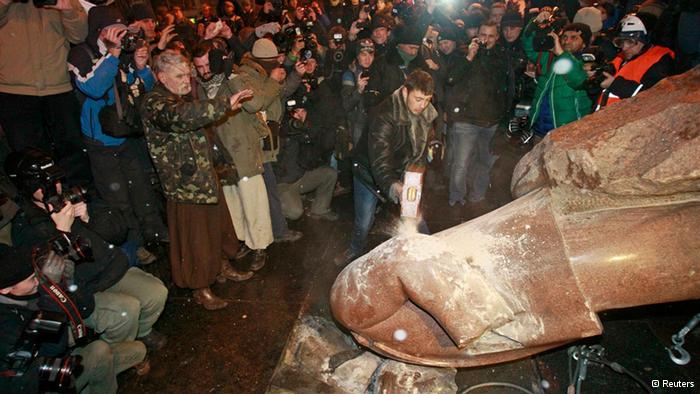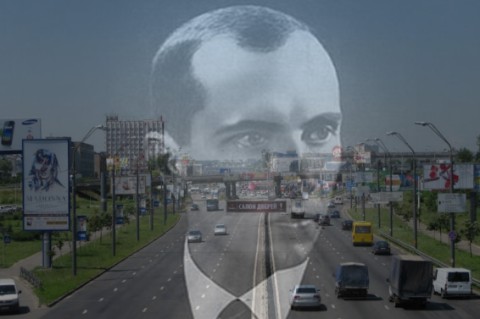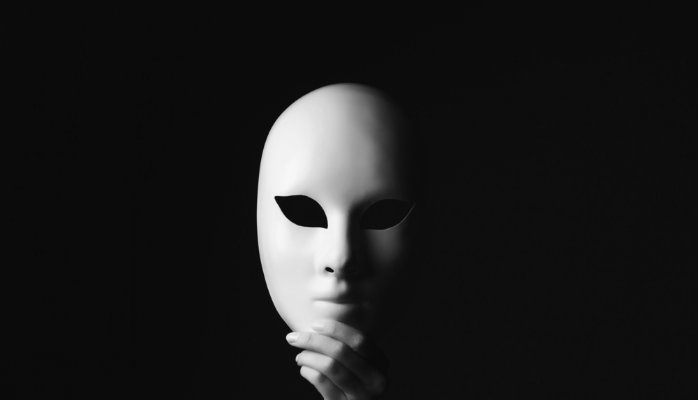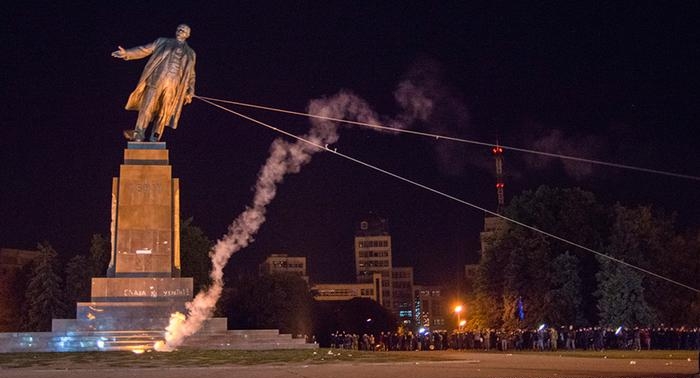Why does Ukraine need decommunization of symbols in the public sphere?
First of all it should be noted that this is not a battle against the ideology of the left as such, but about the removal from the public sphere of symbols of a specific state, which from 1922-1991 was called the USSR.
Only zealous Russian chauvinists deny the mass crimes of the Soviet Union against its own and foreign citizens. Just a few decades have passed since the days of the Holodomor and mass repressions. Some of the victims and their children remain alive, and for these people it is morally oppressive to constantly face, amid the symbols of independent Ukraine, symbols of the state that once destroyed their lives. It is difficult to see monuments of Soviet leaders occupying equal prominence to monuments of Shevchenko and Vernadskyi.
Until recently, tolerance of Soviet symbolism in Ukraine legitimized that regime and its mass crimes.
It is no secret to most citizens that a large portion of Ukraine's current “elite” arose from the Komsomol and Communist Party leadership. Not surprisingly, popular opinion of the Ukrainian state hardly differs from opinions of the Soviet state, and citizens themselves typically continue to expect a paternalistic government and remain passive about protecting of their own rights. Because there appears to be little difference between Ukraine and the USSR.
The Soviet regime did not consult with local communities about whether to erect such monuments and symbols.
Advocates for preservation of Soviet symbols claim a significant number of supporters, completely ignoring the enormous portion of society which categorically rejects these symbols.

City mayors, accustomed to focusing on pensioners as the most significant voting block, don’t dare to bring up the question of decommunization of the public sphere. Patriotic citizens, who cannot see a realistic legal way to remove Lenin monuments, resort to dismantling them, which normally ends in their destruction, as, for example, during the Maidan period.
Here, advocates for the preservation of “monuments as art” should be campaigning for a civilized resolution of the issue. If this is really art, then it would be better to move it from the public square to a museum, to keep it from being destroyed.
But no, such initiatives do not occur. So the question arises: do defenders of these monuments want to keep them as works of art? Or do they want them to remain standing defiantly in the middle of Ukrainian cities?
Critics of decommunization like to say that the Soviet regime had a “controversial past.” But would they call the Third Reich controversial? Both regimes witnessed the rise of industry and definite, though specific, cultural progress for a while. But could this possibly justify the millions of victims and “absolve” the regime? Especially since, for example, Soviet industrialization was based on the foreign sale of grain confiscated from peasants (Holodomor) for the cheap purchase (Great Depression) of Western industrial equipment.
Eradication of Soviet symbols from the public sphere allows victims of the regime to finally let go of that horrible past and not be reminded of it.
Statues of Roman tyrant-emperors are now freely displayed in the public sphere exactly because neither the tyrants nor the victims of their atrocities are living. These are now just statues and historical artifacts, not propaganda for leaders of the Roman Empire.
[image-comparator left="http://euromaidanpress.com/wp-content/uploads/2015/08/dc4_2.jpg" left_alt="Original decoration; photo: Evhen Nikiforov" right="http://euromaidanpress.com/wp-content/uploads/2015/08/dc4_1_7.jpg" right_alt="Photoshopped image; photo: Olha Salo" width="100%" classes="hover" title="L: Original decoration; photo: E.Nikiforov; R: Photoshopped image; photo: O.Salo"] [/image-comparator]
But there is a powerful force currently resisting the definitive relegation of the Soviet regime into the past, which simultaneously provokes the recurrence of mass casualties in Ukraine.
This force is the Russian Federation.
Russia is not just the legal successor state of the USSR: Putin’s regime has even revived one of the Soviet symbols – the national anthem – and it constantly pines for Soviet times. And for good reason.
The Communist regime, accompanied by class-based repressions, began as an anti-bourgeois, anti-religious locomotive of the “world revolution,” whose proponents of the time followed many streams. In 1922, Lenin’s approach of uniting the at least formally equal republics into a Union won out over Stalin’s approach of incorporating them into Soviet Russia with autonomous rights.
Within the Soviet elite of Ukraine in the 20s there was a powerful wing of national-communists – Skrypnyk, Khvyliovyi, and others – thanks to whom the Ukrainization of the Ukrainian SSR became possible, the so-called “Executed Renaissance.” Fans of Soviet symbolism like to point to these historical events as the positive aspects of Soviet power. But such modestly pro-Ukrainian phenomena were deviations rather than the general trend.
Witnesses of that proletarian USSR and national-communists are effectively not among the living. On the other hand, there are many surviving witnesses of “greater Russia” in the guise of the USSR.
Once Stalin was established in power, national-communists were “cleaned out,” representatives of the Executed Renaissance were persecuted, Ukrainization was suppressed, and the Soviet regime began to acquire a nationalistic Russian character, typical of the pre-revolutionary Russian Empire. In our subjective opinion, the final turning point in this respect occurred during the Second World War.
In precisely this period we see some convergence of the Soviet leadership and the Russian Orthodox Church: beginning in 1944, only registered marriages remained legitimate, following an abortion ban in 1936. The late Soviet apotheosis was the expression “In the USSR there is no sex.”
Russification unfolded in Ukraine with the aim of consolidating nations into one “Soviet nation,” in reality built on a Russian cultural base. The opponents of national communists viewed this as a battle between the proletarian/”progressive” Russian culture against the village-based Ukrainian one. They emerged as the victors from this battle, creating all the conditions required to support the first of these cultures, particularly in the intellectual sphere.
If the Ukrainian intellectual elite was divided between national-communists and supporters of the Ukrainian People’s Republic, among the Russian elite this was impossible in principle (Russia’s exit from the USSR would have been ridiculous) and the elites in other republics of the USSR were not as numerous.
Stalin was Georgian and catered for support to the Russian constituency, which was the most powerful. Semi-official antisemitism returned to the USSR. Russian nationalists began to take control. Like the Eastern Roman Empire which, by taking advantage of the human potential of the Greeks, transformed into the effectively Greek nation of Byzantium, so too the USSR became a variant of the Russian Empire. Upon the disappearance of the bourgeois and “kurkuls” [the relatively well-off peasants that resisted collectivization - ed.] as a class, class-based persecution shifted to unofficial persecution based on national identity, somewhat driven not “from above,” but “from below.”
The components of the system initiated its own transformation. It is no wonder that in the west the USSR was unofficially but accurately referred to as “Russia” during the Cold War.
Current Soviet advocates are not nostalgic for the proletarian revolution, which they were never a part of. They pine for state paternalism dominated by Russian identity.
Exactly because of this, Putin views any attacks on the USSR as an attack on Russia, and will do anything to continue the traditions of the Soviet Union. This is also why the abandonment of Soviet symbolism is in fact the cleansing of Ukraine from the symbolism of a country with which we find ourselves in a state of war.





